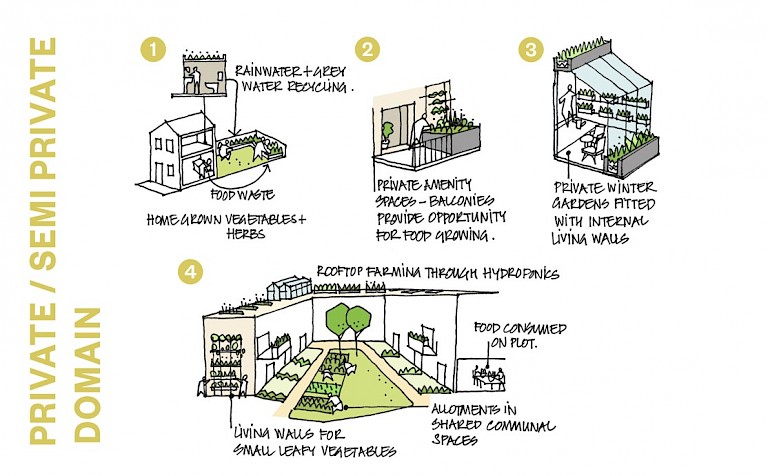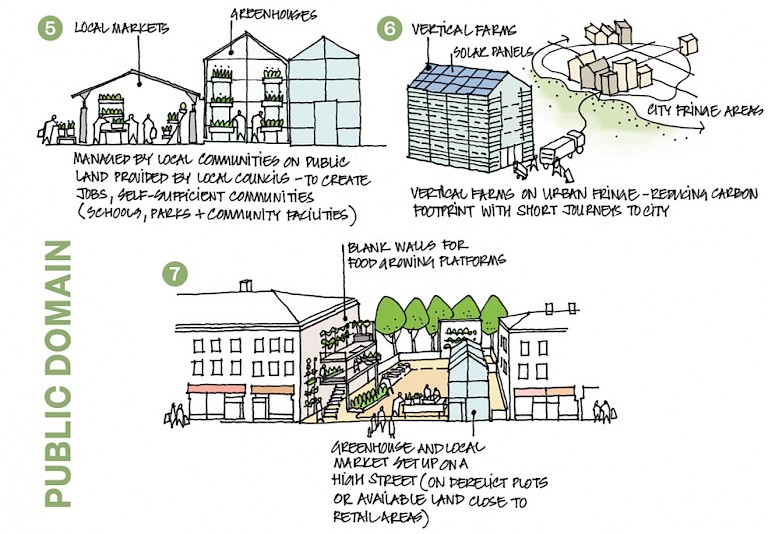
We recently submitted an entry called 'Smarter food, healthier people, happier societies' into the NLA’s Build Back Better ideas competition. The objective was to showcase ideas and solutions for a resilient post-pandemic London and our idea explores how our urban spaces could be better used for growing food locally.
The Covid-19 crisis has caused a breakdown in our international supply chains. Developing urban spaces which produce fresh food will not only break this dependence but will improve the quality of life for our communities. There is a need for cost-effective solutions to deal with the future requirements of food for our city. We need to start thinking proactively about how our streets, squares, plazas, disused open spaces and urban fabric could be put to better use for local food production. This will not only help to reduce our urban ecological footprint but will bring added benefits for local communities through job creation and skills training, better health and mental wellbeing and easy access to locally-grown produce.
Multifunctional green infrastructure should be based on circular economy principles and at varying scales of intervention. This should be integrated into the urban fabric to include:
- Vertical urban farms in disused spaces / buildings and urban fringes
- Community / neighbourhood allotments in local parks, schools and community facilities
- Green houses / local food markets – managed by local communities
- Back gardens and private amenity spaces designed to encourage food growing
- Urban farming with rooftop spaces and hydroponics
- Living walls – indoors and outdoors.
The idea was to get fellow built environment professionals and policy makers to start thinking ‘out of the box’ when considering how green infrastructure can be integrated into our city fabric. Covid-19 has brought many of us closer to nature and we are seeing many international cities now stressing the need to integrate green and blue systems into our everyday functions. Couldn't this green infrastructure provide us with edible spaces/landscapes which feed our populations without food travelling far to reach our plates? Will this not make our cities more resilient to economic and environmental shocks? How would this help nourish our children and combat the obesity and health problems we face in the UK today? These were some of the questions asked with solutions posed through local and international precedents.
I covered this topic in more detail at the NLA's Pecha Kucha on Monday – a recording is here if you are keen to listen – and there were some great ideas shared by other speakers around High Streets, air quality and integrated planning approaches. I hope you’ll find the presentations and discussions interesting.
